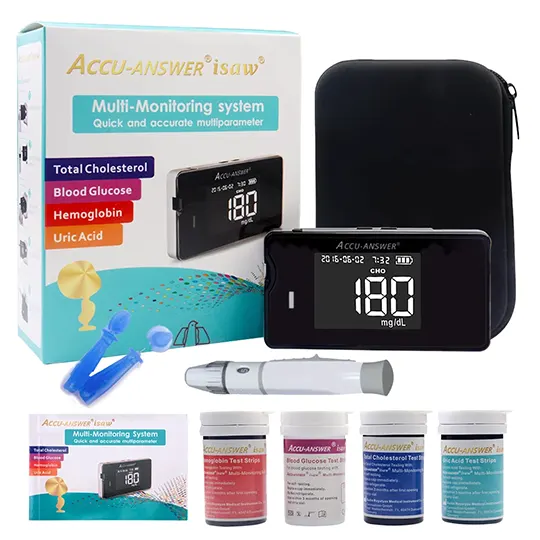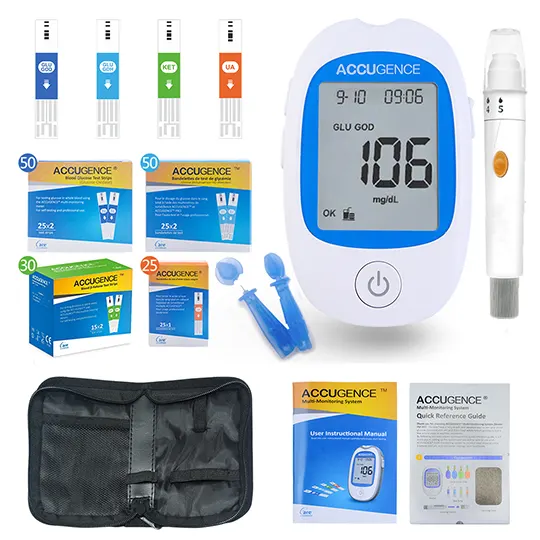Dosing and uses of Androderm, AndroGel (testosterone transdermal)
Adult dosage forms and strengths
patch, transdermal: Schedule III
- 2mg/24hr
- 4mg/24hr
gel, transdermal: Schedule III
- 1% (12.5mg/actuation) (Androgel)
- 1.62% (20.25mg/actuation) (Androgel)
- 10mg/actuation (1 pump actuation dispenses 0.5 g of gel) (Fortesta)
- 12.5mg/actuation (Vogelxo)
- 20.25mg/1.25g
- 25mg/2.5g
- 40.5mg/2.5g
- 50mg/5g (Testim)
- 50mg/unit dose pack (Vogelxo)
ointment, topical: Schedule III
- 2%
solution, topical: Schedule III
- 30mg/actuation (90mL) (Axiron)
cream, transdermal: Schedule III
- 2%
Testosterone Deficiency
Primary hypogonadism (congenital or acquired): Testicular failure due to conditions such as cryptorchidism, bilateral torsion, orchitis, vanishing testis syndrome, orchiectomy, Klinefelter Syndrome, chemotherapy, or toxic damage from alcohol or heavy metals; these men usually have low serum testosterone concentrations and gonadotropins (FSH, LH) above normal range
Hypogonadotropic hypogonadism (congenital or acquired): Gonadotropin or luteinizing hormone-releasing hormone (LHRH) deficiency or pituitary-hypothalamic injury from tumors, trauma, or radiation; these men have low testosterone serum concentrations but have gonadotropins in the normal or low range
Androderm
- 4 mg/day initially, applied patch to back, abdomen, arm, or thigh (not to scrotum) at bedtime; do not use 2 mg/day patches to achieve 4 mg dose
- Nonvirilized: 2 mg/day initially
- Usual dosing range: 2-6 mg/day
AndroGeL
- 1%: 50 mg/day initially, applied topically to shoulders, upper arms, or abdomen (not to genitals) each morning; titrated PRN according to predose serum testosterone levels (25 mg/2.5 g, 50 mg/5 g); not to exceed 100 mg/day
- 1.62%: 40.5 mg (2 pump actuations) daily initially, applied topically to shoulders or upper arms (not to abdomen or genitals) each morning; titrated between 20.25 mg (1 pump actuation) and 81 mg (4 pump actuations) according to predose serum testosterone levels; not to excee 81 mg/day
- Measure serum testosterone levels 14 and 28 days after initiation, then periodically thereafter
Testim
- 50 mg/day, applied topically to shoulders and upper arms (not to genitals) each morning; may be increased to 100 mg PRN (50 mg/5 g)
Axiron
- 60 mg/day, applied topically to axilla (1 pump actuation applied to each axilla) each morning; titrated according to serum testosterone levels obtained from single blood draw 2-8 hours after application and ≥14 days after treatment initiation or dosage adjustment
Fortesta
- 40 mg (4 pump actuations) daily initially, applied topically to thighs each morning; titrated according to serum testosterone levels obtained from single blood draw 2 hours after application and approximately 14 and 35 days after treatment initiation or dosage adjustment
- Measure serum testosterone concentrations periodically
Vogelxo
- 50 mg (1 unit dose pack or 4 pump actuations) topically qDay at about the same time each day
Dose Adjustment Based on Testosterone Levels
Androderm
- >930 ng/dL: Decrease to 2 mg/day
- 400-930 ng/dL: Continue 4 mg/day
- <400 ng/dL: Increase dose to 6 mg/day (as one 4 mg/day and one 2 mg/day)
Androgel 1%
- Less than normal range: Increase dose from 50 mg to 75 mg or from 75 mg to 100 mg once daily
- Greater than normal range: Decrease dose; discontinue if consistently above normal at dose of 50 mg/day
Androgel 1.62%
- >750 ng/dL: Decrease dose by 20.25 mg/day
- >350 ng/dL: Maintain current dose
- <350 ng/dL: Increase dose by 20.25 mg/day
Fortesta
- Base adjustment on total serum testosterone concentrations 2 hours after application
- ≥2500 ng/dL: Decrease by 20 mg/day
- ≥1250 ng/dL to <2500 ng/dL: Decrease dose by 10 mg/day
- ≥500 ng/dL to <1250 ng/dL: Maintain current dose
- <500 ng/dL: Increase dose by 10 mg/day
Axiron
- >1050 ng/dL: Decrease 60 mg daily dose (2 pump actuation) to 30 mg/day (1 pump actuation); discontinue if levels >1050 ng/dL persist after dose reduction
- <300 ng/dL: Increase current dose by 1 pump actuation/day (30 mg)
Testim
- Less than normal range: Increase dose from 50 mg/day to 100 mg/day
- Greater than normal range: Decrease daily dose
Vogelxo
- Measure morning (predose) serum testosterone concentrations ~14 days after initiation of therapy to ensure proper serum testosterone concentrations are achieved
- If level is below normal range (ie, 300-1,000 ng/dL), increase dose to 100 mg qDay; not to exceed 100 mg/day
Vulvar Dystrophy (Orphan)
Orphan indication sponsor
- Star Pharmaceuticals, Inc, 1990 NW 44th Street, Pompano Beach, FL 33064
Administration
Prior to initiating therapy, confirm the diagnosis of hypogonadism by ensuring that serum testosterone concentrations have been measured in the morning on at least two separate days and that these serum testosterone concentrations are below the normal range
Do not apply any transdermal testosterone product to genitals
Androderm
- Apply to back, abdomen, arm, or thigh
Testim
- Apply to shoulders or upper arms
AndroGeL
- 1%: Apply to shoulders, upper arms, or abdomen (not to genitals)
- 1.62%: Apply to shoulders or upper arms (not to abdomen or genitals)
Axiron
- Apply to clean, dry intact skin of axilla, not to any other body regions (including abdomen and genitals)
- Patients should wash hands with soap and water immediately after application and should cover application site with clothing after solution has dried
- Wash application site thoroughly with soap and water before any situation in which skin-to-skin contact of application site with another person is anticipated
- Application site and dose are not interchangeable with those of other topical testosterone products
Fortesta
- Apply to clean, dry, intact skin of thighs, not to genitals or any other body regions
- Patients should wash hands with soap and water immediately after application and should cover application site with clothing after gel has dried
- Wash application site thoroughly with soap and water before any situation in which skin-to-skin contact of application site with another person is anticipated
- Application site and dose are not interchangeable with those of other topical testosterone products
Vogelxo
- Apply to clean, dry, intact skin
- Apply to shoulders and/or upper arms
- Do not apply to the genitals or abdomen
- f morning pre-dose serum testosterone concentration is below the normal range, increase dose to 100 mg
Limitations of use
Safety and efficacy of testosterone in men with “age-related hypogonadism” (also referred to as “late-onset hypogonadism”) have not been established.
Safety and efficacy of testosterone in males less than 18 years old have not been established
Pediatric dosage forms and strengths
Safety and efficacy not established
Androderm, AndroGel (testosterone transdermal) adverse (side) effects
>10%
Pruritus at application site (37%)
Skin reactions at application site (16.1%)
Blisters under skin (12%)
1-10%
Erythema at application site (7%)
Vesicles at application site (6%)
Allergic contact dermatitis (4%)
Burning at application site (3%)
Induration at application site (3%)
Frequency not defined
Abnormal dreams
Acne
Anaphylaxis
Bladder irritability
Breast soreness
Cholestatic jaundice
Deep vein thrombosis
Dry skin
Fatigue
Gynecomastia
Headache
Insomnia
Menstrual irregularities
Priapism
Suppression of factors II, V, VII
Virilization
Postmarketing Reports
Vascular Disorders: Venous thromboembolism
Cardiovascular disorders: Myocardial infarction, stroke
Warnings
Black box warnings
Virilization can occur in children and women after secondary exposure to testosterone gel preparations
Children and women should avoid contact with testosterone application sites on men using testosterone geL
Testosterone gel users should adhere to recommended instructions for use
Contraindications
Males with breast or prostate cancer
Hypersensitivity
Breast feeding women
Pregnancy
Cautions
Use with caution in patients with chronic lung disease, obesity, advanced age, or preexisting cardiac, renal, or hepatic disease
Employ caution with prolonged use of high doses, which may be associated with hepatic effects
May increase risk of prostate cancer
Risk of gynecomastia when used for male hypogonadism
May change serum lipid profile; use with caution in patients who have history of mycoardial infarction (MI) or coronary artery disease (CAD)
Large doses may suppress spermatogenesis
May increase hematocrit, which requires dose adjustment or discontinuation; monitor serum testosterone, prostate specific antigen (PSA), liver function, lipid concentrations, hematocrit and hemoglobin periodically
May cause hypercalcemia in patients with prolonged immolibization or cancer
Anabolic activity of androgens may enhance hypoglycemia
Children: Risks of inappropriate genital enlargement, premature pubic hair, advanced bone age, increased libido, and aggressive behavior
Fortesta: Exogenous administration of androgens may lead to azoospermia; sleep apnea may occur in those with risk factors; preparation is flammable until dry
Discontinue if urethral obstruction develops in patients with benign prostatic hyperplasia (BPH); monitor patients with BPH for worsening of signs and symptoms of BPH
Edema with or without congestive heart failure, may be a complication in patients with pre-existing cardiac, renal, or hepatic disease; use with caution
May worsen sleep apnea in some male patients
Evaluate patients for cardiovascular risk factors prior to initiating therapy and monitor closely during therapy
Use caution in patients with diseases that may be exacerbated by fluid retention, including cardiac, hepatic, or renal dysfunction; not recommended for men with poorly controlled heart failure
Monitor women for virilization when treating for metastatic breast cancer
Geriatric patients may be at greater risk for prostatic hyperplasia, prostate cancer, fluid retention, and increase in transaminase levels
Increased hematocrit (polycythemia), reflective of increased red blood cell mass, may require discontinuation; increases risk for thromboemolism
Venous thromboembolism, including DVT and PE reported in patients using testosterone products; these observations have included patients with and without polycythemia; evaluate signs or symptoms consistent with DVT or PE; if venous thromboembolic event suspected, discontinue treatment with testosterone and initiate appropriate workup and management
Skin burns reported at application site in patients wearing an aluminized transdermal system during a magnetic resonance imaging scan (MRI); because transdermal testosterone patch contains aluminum, it is recommended to remove system before undergoing MRI
Cardiovascular risks
- Some postmarketing studies have shown an increased risk of myocardial infarction and stroke associated with the use of testosterone replacement therapy
- January 31, 2014: FDA is investigating risk of stroke, MI, and death in men taking prescription testosterone drugs; investigation was prompted by findings from 2 studies suggesting increased risk of MI in men who take testosterone
- In one study, analysis of 55,593 men with history of MI showed that men >65 years had 2-fold increase in MI risk within 90 days of filling initial prescription for testosterone drug; among younger men (<65 years) with history of heart disease, MI risk was increased 2- to 3-fold
- This study confirmed results of earlier, much smaller study, which found that older men, many with underlying heart disease, had 30% increased chance of death, MI, and stroke after receiving testosterone therapy
Pregnancy and lactation
Pregnancy category: X
Lactation: Drug is excreted into breast milk; use is contraindicated
Pregnancy categories
A: Generally acceptable. Controlled studies in pregnant women show no evidence of fetal risk.
B: May be acceptable. Either animal studies show no risk but human studies not available or animal studies showed minor risks and human studies done and showed no risk.
C: Use with caution if benefits outweigh risks. Animal studies show risk and human studies not available or neither animal nor human studies done.
D: Use in LIFE-THREATENING emergencies when no safer drug available. Positive evidence of human fetal risk.
X: Do not use in pregnancy. Risks involved outweigh potential benefits. Safer alternatives exist.
NA: Information not available.
Pharmacology of Androderm, AndroGel (testosterone transdermal)
Mechanism of action
Endogenous androgen; promotes growth and development of male sex organs and maintains secondary sex characteristics in androgen-deficient males
Absorption
Duration: 24-48 hr (gel)
Peak plasma time: 2-6 hr
Peak effect: 3-24 months
Distribution
Protein bound: 98%
Vd: 75-122 L/kg
Metabolism
Metabolized in liver to glucuronic and sulfuric acid conjugates
Metabolites: Testosterone glucuronic conjugate (activity unknown), testosterone sulfuric acid conjugate (activity unknown), testosterone-19-d3
Elimination
Half-life: 10-100 min
Renal clearance: 2 L/min
Excretion: Urine (90%), feces (6%)



